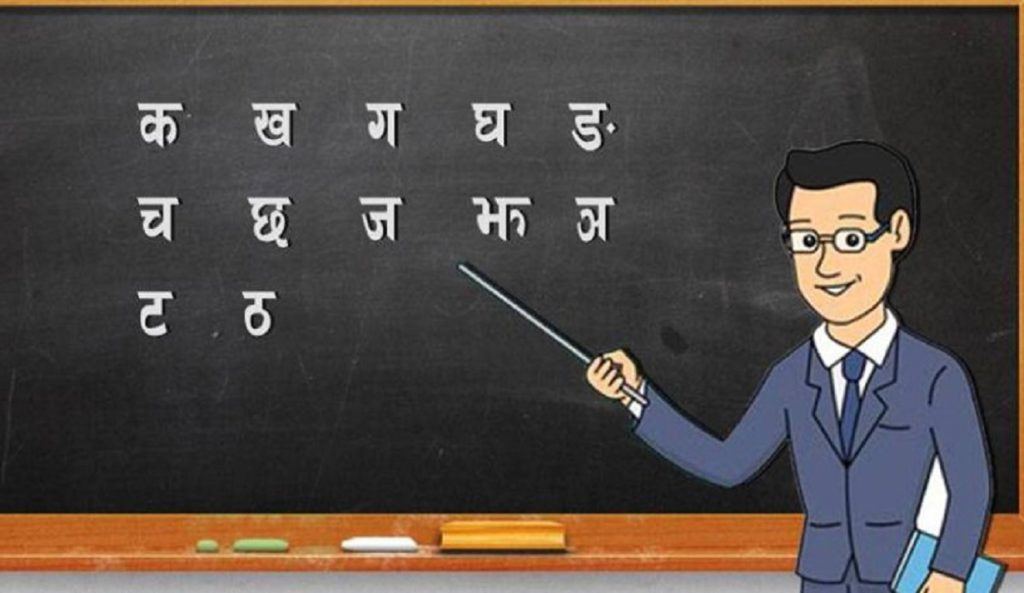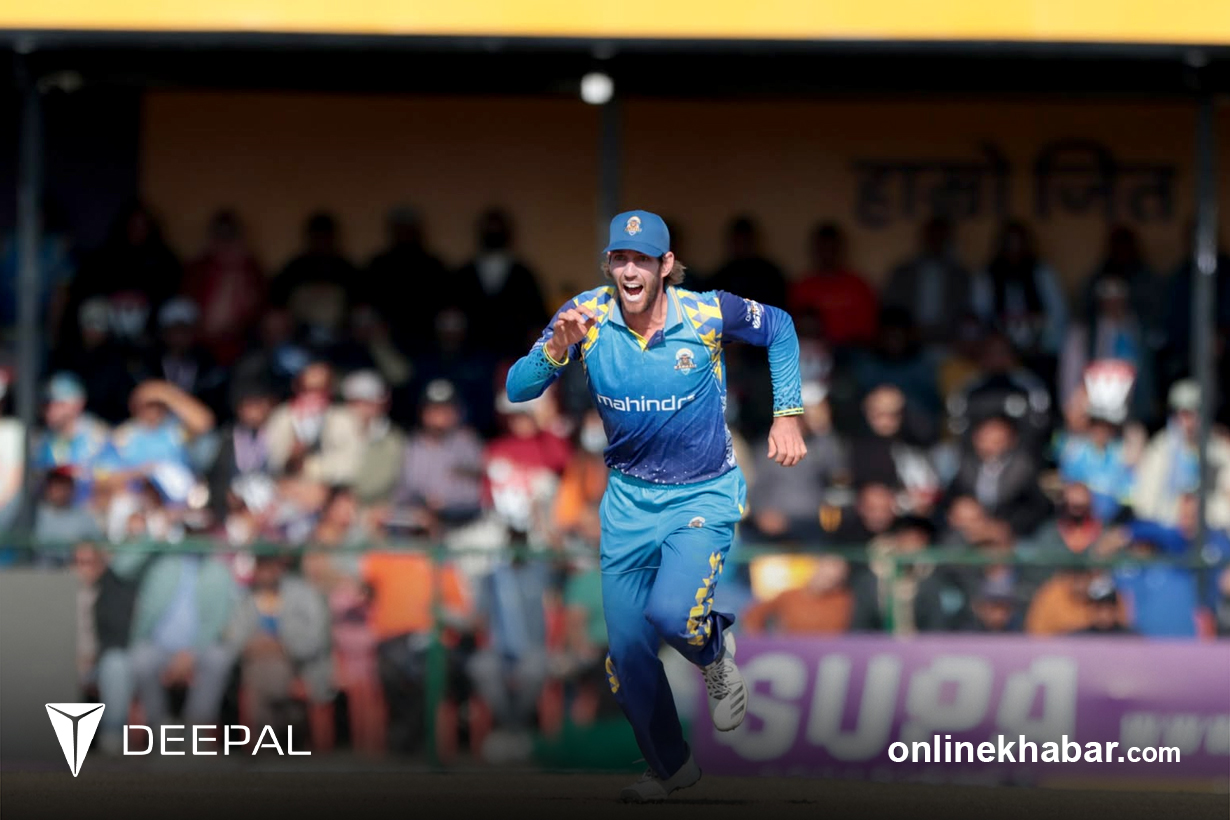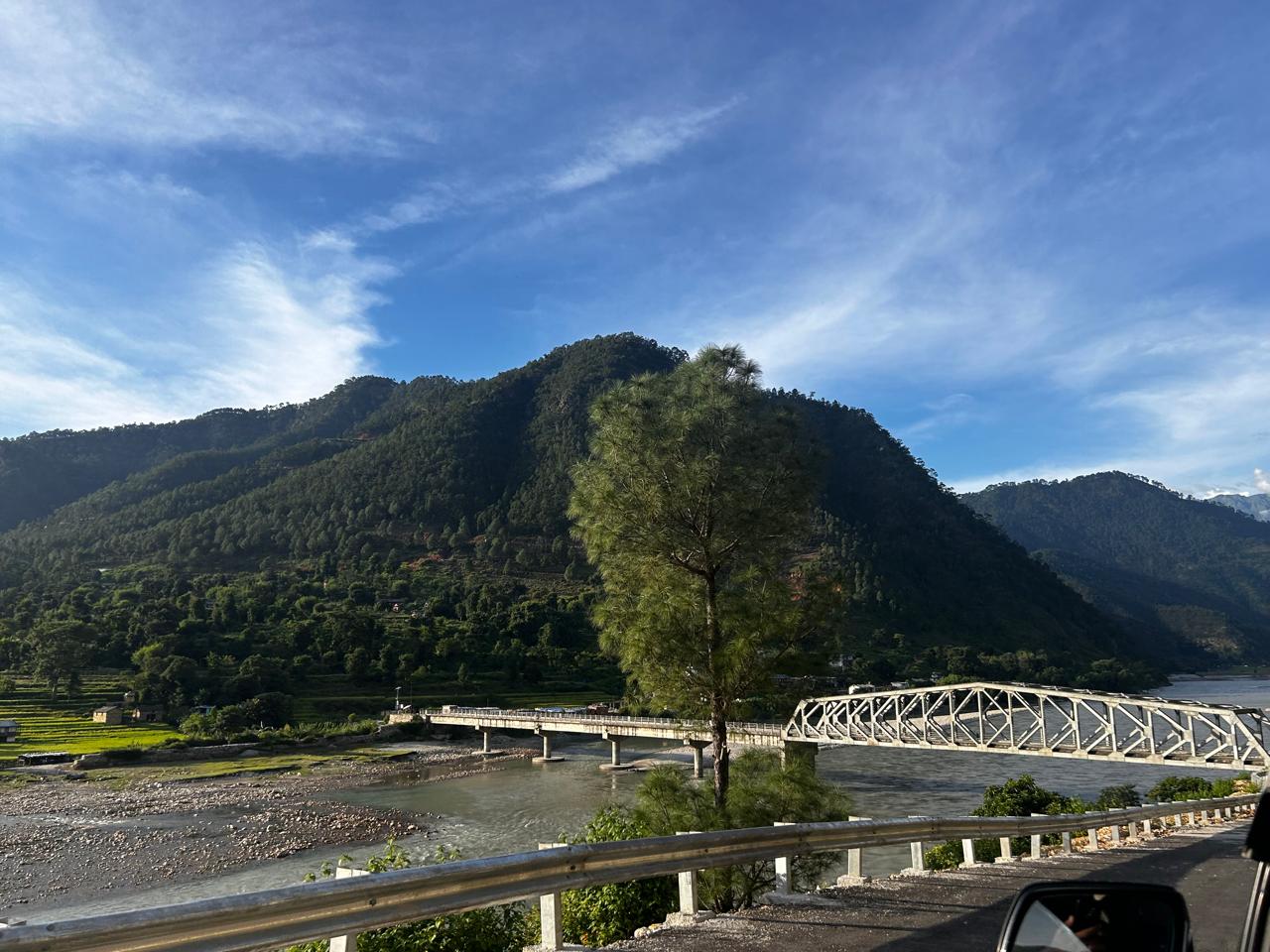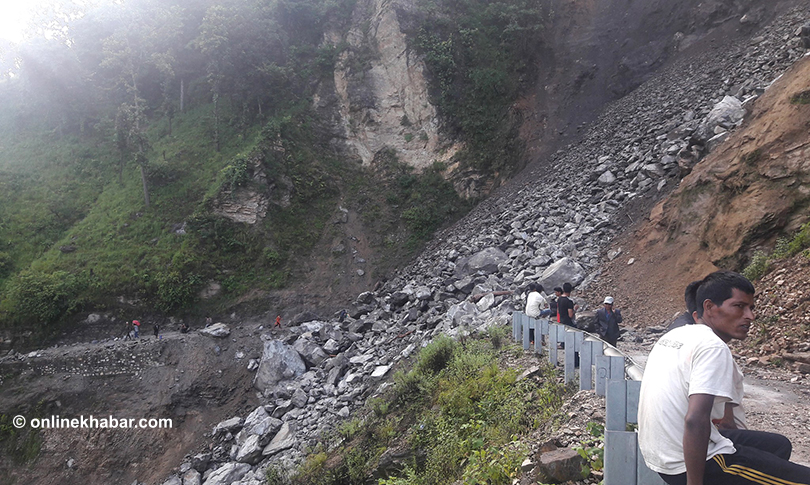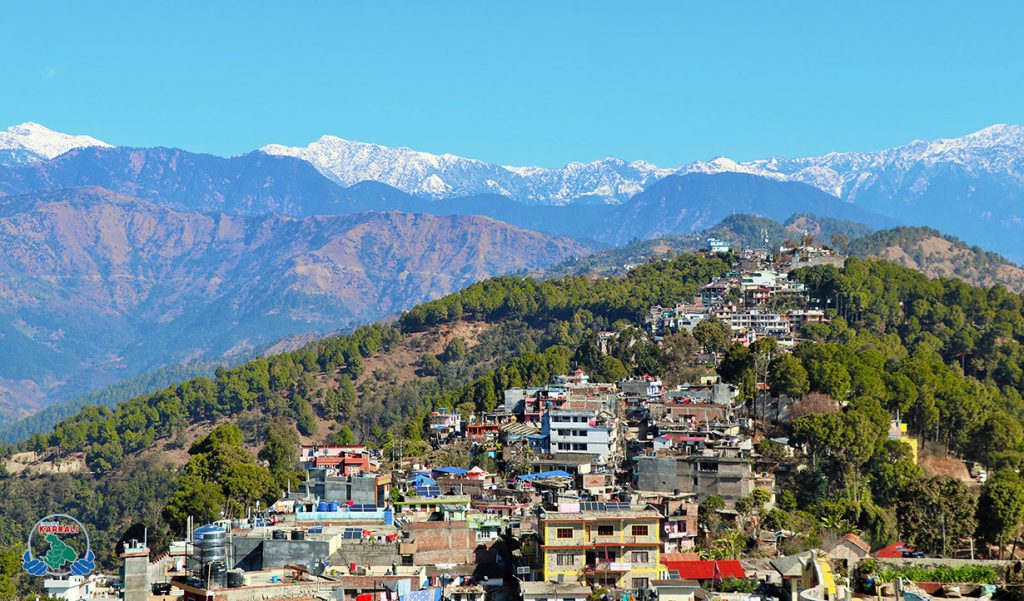
I could not believe my eyes! It was a pure work of art! At Bunghat, the Karnali water had scoured the big boulders eroding them into an exquisite piece of sculpture–as if, an artist had taken great pains to carve them with his chisel and hammer. The fast flowing turquoise waters of Karnali and the resonant rumble provided a perfect backdrop to the aesthetic ambience of the place.
I had heard and read about Chisapani and its landmark bridge over the great Karnali River. When I finally made the journey to this far western region and got the opportunity to see the bridge for real, I literally gawked at the behemoth as it towered over me, a sheer bulk of concrete, steel, and cables (3,870 tons) dominating the skyline. The sight of the Karnali River making a dramatic entry through a steep rocky gorge, flowing down southward under the bridge was just awe-inspiring.
The single-pylon Chisapani cable-stayed bridge spanned the Karnali River, separating Bardiya and Kailali District on the East-West Mahendra Highway, 576km southwest of Kathmandu and some 90 km northwest of Nepalgunj. Completed in June 1993, it’s the only cable-stayed bridge in Nepal and considered one of the longest of its type in the world, 500 meters long, 10 meters wide and 125 meters high. The longest single-pylon bridge in the world is the Surgut Bridge over the Ob River in Siberia, Russia with a span of 2,070m.
Engineering marvel
An exceptional feat of engineering, every inch to the hilt! It took six years for Kawasaki Heavy Industries of Japan to build it leaving behind reminiscences of heroic efforts, great determination and punishing hard work put in by the engineers, contractors and construction crews against all odds and challenges. Those epic six years also took a heavy toll in mounting injuries and loss of a few lives.
Hitherto little known, Chisapani rose to prominence and trade after the bridge emerged, thus linking far western regions like Mahendranagar, Kanchanpur, Doti, Bajhang, Baitadi and many more. The local elders still remember the old days before the bridge came, when crossing the boisterous Karnali by boats and ferries was a perilous task, near impossible to venture during the monsoon spate.
Like all the far western regions, Chisapani was no more than a remote unknown settlement in the back of beyond surrounded by thick jungle before the east-west highway opened in the 1980s. The only access to this little town was to fly to Nepalgunj, and then either take a five/six-day elephant ride through the dense Bardiya forest or by foot along a jungle foot trail infested with all manner of wild animals and the dreaded killer malaria. Invariably, all the far western districts in those days could be reached from Kathmandu only by traveling via India.

It was my passion for fishing, which brought me to this little highway town in far-west Nepal way back in 2011. Translating to ‘cold waters’ the locals believed Chisapani was named after the cold waters of the snow-fed Karnali River. The small highway settlement was located on the western high banks of the Karnali, the longest (1,080km), probably the wildest and by far the most untamed river in Nepal. Seven tributaries including Mahakali, Seti (Budhi Ganga) and Bheri converge on the river Karnali.
After the chaotic, dusty, humid and squalid Nepalgunj, followed by vast expanses of farmland, the landscape dramatically changed after the highway entered the Bardia district. Soon, we were at the perimeters of the Bardiya National Park as the road cut through the dense forest. In the north, the diminutive Chure hills rolled along keeping us company as our truck sped on the highway. A friend from Nepalgunj had chosen to drive me to Chisapani in his pickup truck. It took some two and a half hours to arrive at our destination.
Highway town
Chisapani bazaar was located across the colossal bridge. To the east, beyond the bridge, forested hills stretched out as far as you could see. The imposing forest-clad Chure hills that rolled northward formed the northern border of Bardiya National Park. The due north offered an untamed landscape as the tall Chure ridges flanked the awesome Karnali, which cut through a deep gorge on its southward journey. The west was marked by the receding hills, stretches of farmland and the east-west highway. Southward, the river spread out into vast swathes of Terai floodplains and then disappeared from view behind the dense rainforests of Bardiya National Park.

Chisapani boasted of three things: the landmark bridge; the mighty Karnali River and the many roadside tea stalls that served fish. The source of river Karnali can be traced as far up as the Mount Kailash and Lake Mansarovar in western Tibet. Going by three different names: K’ong-ch’iao Ho in China, Karnali in Nepal, and Ghagra in India, it finally converges with the legendary Ganges. Its wild descent into Nepal after Tibet carries it through high canyons and deep gorges with many a V-grade rapids and drops on its southward journey joined in by feeder streams like the Seti in Doti and the Bheri in Surkhet Districts
Typical of most highway hubs, Chisapani’s main bazaar was a cluster of eateries that flanked the road sprawled out in a haphazard fashion. On one side, if ramshackle houses served as eateries and crummy lodges, the other side made for makeshift lean-tos where travelers bought tea, fruits and tidbits.
What struck us most at the market eateries was the row upon row of fresh as well as dried smoked fish hanging by the shop fronts. On arrival of a bus, I watched hordes of travelers heading for those eateries to try a platter or two of fried fish, the local delicacy. To me, it looked that Chisapani bazaar was doing a brisk business selling fish. Later, I came to learn that all that fish did not come from the Karnali River. Overfishing and rugged terrain had reduced the fishing in the Karnali waters to almost nil. The bulk of the fish came from the nearby village ponds commercially run by the local farmers.
The legendary Golden Mahseer (Tor putitora) in the Karnali River has fared the worst. Their numbers in the Karnali waters of Chisapani have dwindled disastrously. There was a time when even Gangetic dolphins could be sighted at Bunghat, north of Chisapani bazaar. Today, they have completely disappeared from the waters around Chisapani.
“Chisapani used to be a bustling town doing brisk business as it also happened to be a busy route to far west regions like Accham, Dailekh, Kalikot, and Jumla, but the town lost its prominence after the Kohalpur-Surkhet road was built.” Harkha Rawat, a resident of Chisapani, told me.
To the north of the town, a road headed north that ran all the way down the foothills of the Chure. Called the Tuki Bazaar, the place was flanked by rows of tin-roofed shanty houses most of which served as shops selling all kinds of wares from grocery to electronics. That road happened to be the old foot trail to the many hilly districts like Achham, Dailekh, and Jumla. The back of the houses seemed to function as living quarters. The bazaar thinned out as the road led to the foothills and the next village called Pitmari.

Pitmari afforded a stunning view of the river gorge where it cut its way south through the hills. A local guy told me that the gorge at the spot was famed for many a prize catches of the legendary Golden Mahseer fish in the past. I was at the river banks a few days ago casting for that great fish. At Bunghat, way down north of Pitmari, my eyes met a strange sight while working the river up and down at the rocky banks.
I could not believe my eyes! It was a pure work of art! At Bunghat the Karnali water had scoured the big boulders eroding them into an exquisite piece of sculpture–as if, an artist had taken great pains to carve them with his chisel and hammer. The fast flowing turquoise waters of Karnali and the resonant rumble provided a perfect backdrop to the aesthetic ambiance of the place.
Sparsely populated, Chisapani was inhabited by a heterogeneous class of Magars, Gurungs, Thakuris, Chhetris, Newars, and Brahmins. With cultivation on a modest scale, the local people live on trading, fishing, cattle-raising, piggery, labor work and doing odd jobs. Its residents also included quite a number of Indian Army recruits and pensioners.
Local legend
Every town or city is bounded by some kind of myths and history. Chisapani was no exception. Harkha Rawat related this local legend to me, which sounded interesting. “In the ancient times, he began, “the Jumli Raja (King of the old principality of Jumla) wed his daughter to a prince from a Terai state. Both the king and queen were, however, gravely concerned that their beloved daughter, brought up in a cold climate had to endure the windless, blistering heat of the Terai”.
The rest of the story went like this: After a deep consultation with the royal councilors and palace tantrics (shamans), the king ordered his shamans to trap an enormous quantity of wind into a gabu (a bamboo cylinder) to send as part of the dowry along with the groom’s royal entourage. That gift, they thought, would alleviate the scorching weather of the Terai. The king and the queen entreated the princess not to open the bamboo cylinder until she reached the prince’s home.
Fate, however, took a sharp turn and unable to contain her curiosity, the princess forced open the mysterious container at a place called Bunghat (north of Chisapani). The wind trapped in the cylinder suddenly escaped with such savage fury that it triggered a hurricane and turned the river into a raging torrent. The boats carrying the royal entourage capsized.
The prince was swept away by the raging Karnali and was bashed into a big boulder and died. The princess met the same fate after hitting a smaller boulder a little way downriver. These boulders eventually came to be known as the ‘Prince’ and the ‘Princess’. The Prince boulder can be seen at the south of the Karnali bridge, while the Princess boulder is a little farther downriver normally visible when the waters of the Karnali recede in wintry months.
Untamed wind
“Maybe there was some truth in that myth and that accounts for the high winds that reach gale force proportion in Chisapani,” said Harkha and smiled. “Interesting”, I said and smiled back. Harkha further told me that those winds last almost eight months a year. The winds are fiercest in December, January, and February, starting as early as nine in the morning and lasting until one in the afternoon, then resuming again after sunset.
The windy conditions lessen considerably during the monsoon months of July through September. The bridge is the worst hit as the wind gathers a huge momentum barreling down the narrow Karnali gorge. Even in late March, during my visit, my legs felt wobbly on the bridge because of the strong wind and I literally had to shout to be heard as the wind made a deafening sound. “Many a time, village women carrying loads of grass on their back are knocked flat when the winds are at their highest” a lady from Chisapani, told me.
The locals say that the monsoon rains bring respite to Chisapani from the notorious winds from July through September. For Chisapani, the winds, however, are a blessing in disguise since in its absence the place would turn into one of those humid and sweltering Terai settlements. Among other things, even in late March, I was surprised to find few mosquitoes in Chisapani; they stood no chance against the strong wind. In contrast, Nepalgunj swarmed with an army of them.

Chisapani is also well known among the travel trade circle as the ‘put-out’ point for rafting expeditions. Many travel outfitters mount seven to eight-day expeditions on the Karnali with class III to awesome class V rapids. The ‘put-in’ point happens to be at Dhungeswor, Surkhet. So, if you wish to arrive in Chisapani a little off the beaten track, try that eight/nine-day raft trip from Dhungeswor, if of course, you have the taste for a gut-wrenching, adrenalin-pumping spree doing a classic roller-coaster ride through narrow gorges and white water rapids on the churning water of the Karnali. Not for the faint-hearted though!
All things considered, Chisapani, the small town in Nepal’s ‘untamed far west’ as a travel destination can well fit into a fantastic itinerary. You can include a visit to the nearby Bardiya National Park at Thakurdwara in the package to further guarantee a rewarding bargain. Last but not least, if you happen to be a fishing enthusiast, angling for the elusive Golden Mahseer in the great Karnali can offer a thrilling adventure.




